I had my first dance recital when I was five years old. My mother likes to remind me that she thought I had the best costume: a black and white tulle dress, pink bows on my tap shoes and a feather in my hair. I don’t remember much of the routine, but I do remember hating every moment of it.
One jazzy routine in particular started with a dance move that drove five-year-old me absolutely insane. I was never able to turn the right way or use the right foot, all while watching every other girl around me execute it flawlessly. It wasn’t until this year that I remembered what the dance move was: a pivot. Little did I know how topical my childhood frustration would become.
Artists have always had to pivot. We adapted to incorporate technology into our practice. We worked with one another across disciplines. We turned this word over, dumped it inside-out and did everything in our power to understand what this meant for us.
To pivot, as it means to the artistic community, is to adapt your skill set, goals and outlook in order to keep up with a different environment.
The act of pivoting might mean taking up a survival job like nannying, freelancing, blogging or working at a restaurant. I follow a number of different artistic bloggers on Instagram, and each of them has repeatedly emphasized the importance of versatility in their careers. Artists are already subject to the hindrances of an unstable income, not to mention both the increasing social stigma surrounding their craft and the state of the artistic community following the effects of COVID-19.
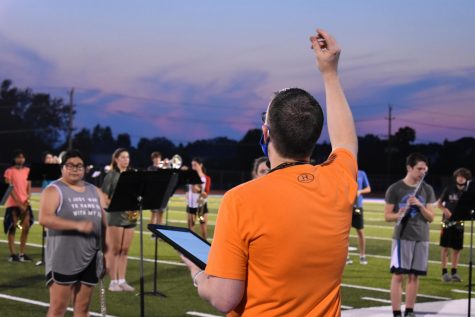
The difference between a loss or golden age of art lies in our arts educators. They are aware of the outlook of the arts community and have been fighting tooth-and-nail for its survival throughout their careers. In this way they are no stranger to pivoting. Rather than exposing fallibilities in our performance and visual arts departments, the pandemic has shined a spotlight on the capabilities of our arts education staff and solidified their place in our community.
This is how they pivot.
Arts education in action
Art is changing.
In the wake of a hurting world, artists everywhere– though this path already has one of the slowest growing job outlooks– have been forced to pivot. Couple this challenge with the trials and tribulations of teaching, creating multiple curriculums and parenting. A month ago, this was the mountain that stood before arts teachers.
Art is collective.
“I felt a lot of complicated things,” visual arts teacher Ashley Drissell said of the initial shift to virtual learning. “[I felt] sadness that I would not be seeing my students in person, overwhelmed at the thought of homeschooling two littles and teaching 75 high school students and also overwhelmed by the technology overload. It was a lot to take in.”
Theater teacher Amie Gossett made similar changes to her curriculum. Gossett was tasked with creating curriculum for five online classes, three of which were used districtwide.
“First and foremost, I had to really evaluate what skills were the most important to teach related to theater. I then had to seek out resources in a digital format to be able to supplement and support what I was teaching in class,” Gossett said.
Senior Becca Vierck is a student in one of her newest courses, Comedy in Action, which was created with the virtual format in mind.
“We’ve been doing a lot of activities that don’t require physical interaction between the players, but instead just rely on our voices and our physical portrayal, like stand-up, where all we need is a clear view of the performer,” Vierck said.
In conjunction with the other theater teachers throughout the district, Gossett worked to create a series of online workshops to ensure theater’s extracurricular presence in a virtual classroom. She estimated the entire creation process took her upwards of five weeks.
“It is so important in the arts to be adaptive and creative with how things are presented. I think for theater this concept has been the most easy to ‘pivot’ because we have to do it daily. You can only do Shakespeare set in Elizabethan times so many times before it becomes stale, so we think of new ways to reinvent it,” Gosset said.
A virtual classroom produces challenges for arts education– though they are challenges Band Director Brad Wallace is willing to accept. He utilizes breakout rooms and screen share to create smaller ensembles and allow students to work with each other.
“In the arts we focus on the aesthetic and allow our students to share their thoughts and ideas in different ways. These different ways cannot really be replicated virtually,” Wallace said. “Sure, we can work on technique and learn about the band heritage, but making music with a group of your peers is irreplaceable.”
Senior band student and section leader Abbey Thompson shares her thoughts on virtual band classes.
“Band has always been a huge part of my life. Since fifth grade, I always looked forward to that class. It was my escape, where I got to see my favorite people. While that still is the case, online band is just not the same. The program and Mr. Wallace are doing their best to replicate what they can, and it shows in new and fun types of activities, but the change is noticeable,” Thompson said. “On this same note though, through virtual band, I’ve gained a new appreciation for my love of music. I feel that since the whole band and staff had to go through this transition together, we gained better understanding of each other, and are closer as a program.” Thompson said.
Wallace wanted to ensure that students still had some semblance of marching band while also abiding by Centers for Disease Control and Prevention guidelines. His students practice on the football field, consistently stationed six feet apart and wear masks when not playing.
“As I enter my eighteenth year as a music educator, I know that I look at many things differently. I view education differently, and I am very proud that we can offer our students so many musical opportunities here at West. I also know how impactful music can be.”
Art is important.
As we move forward, it is important to acknowledge the importance of the arts and why it is imperative art adapts. Studies show that students with a high involvement in the arts outperform their peers in a wide variety of subjects. A study conducted by Keller Independent School District in Texas observed that arts students were 20% more proficient in math and 16% more proficient in science and history. However, the value of the arts lies beyond facts and statistics.
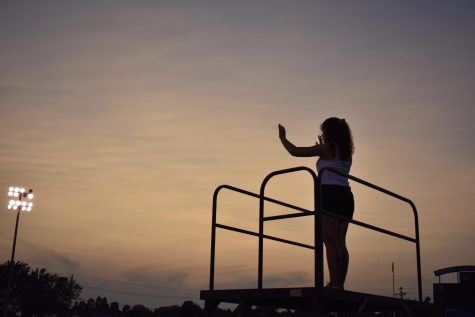
“I am an art teacher because making and doing have helped me heal and find purpose and I actively encourage my students to do the same. We can learn that it’s okay to be quiet and to make mistakes and to question. We can fully be ourselves and be accepted in a space that is diverse,” Drissel said. “Being an art teacher has shown me that we are human, we all have anxious minds, we all make mistakes, and we can all be both vulnerable and safe. I can see the beautiful humanity in people when we tell our visual stories. Art speaks to us in ways that words cannot.”
From a more statistical standpoint, the arts are–despite the stigma– valuable and contribute about 877 billion annually to the economy. This is why it is so necessary that art adapts to a changing world and lives to tell the tale.
Luckily for us, we possess an artistic faculty that will stop at nothing to ensure the arts will continue to flourish at West. Wallace, like Drissell, encourages his students to take this time as a challenge to grow.
“I remind students to enjoy the journey. It is not all about the concert and the end result, but more about how we get to that point,” Wallace said. “The struggles and successes that we all go through together as a band are what makes it such a special experience. That is where my students will hopefully develop skills that will serve them for a lifetime.”



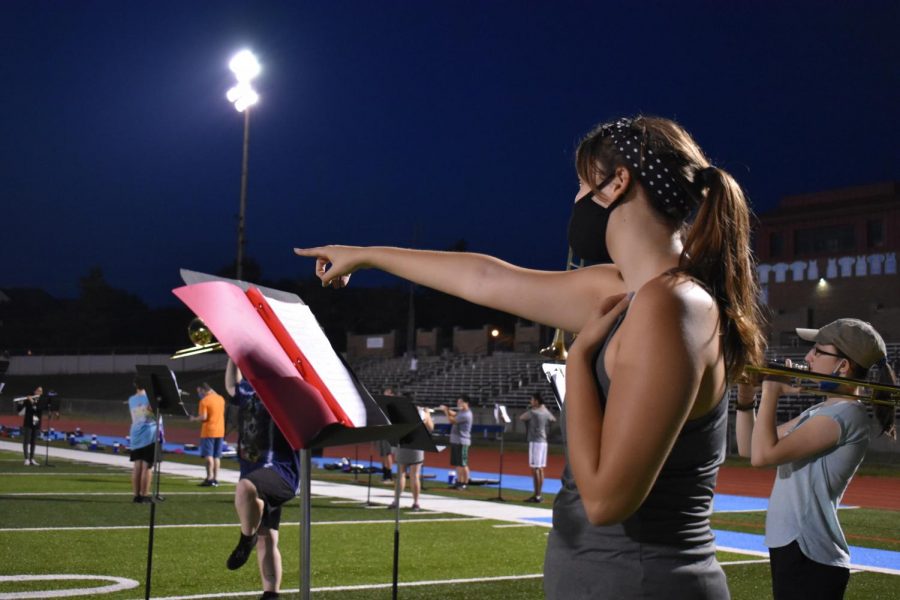
![Leaning on the podium, superintendent Melissa Schneider speaks to Parkway journalism students during a press conference. Schneider joined Parkway in July after working in the Thompson School District in Colorado. “My plan [to bond with students] is to get things on my calendar as much as possible. For example, being in [classes] is very special to me. I am trying to be opportunistic [meeting] kids [and] being in [the school] buildings. I have all the sports schedules and the fine arts schedules on my calendar, so that when I'm available, I can get to them,” Schneider said.](https://pwestpathfinder.com/wp-content/uploads/2025/09/IMG_5425-1200x943.jpeg)

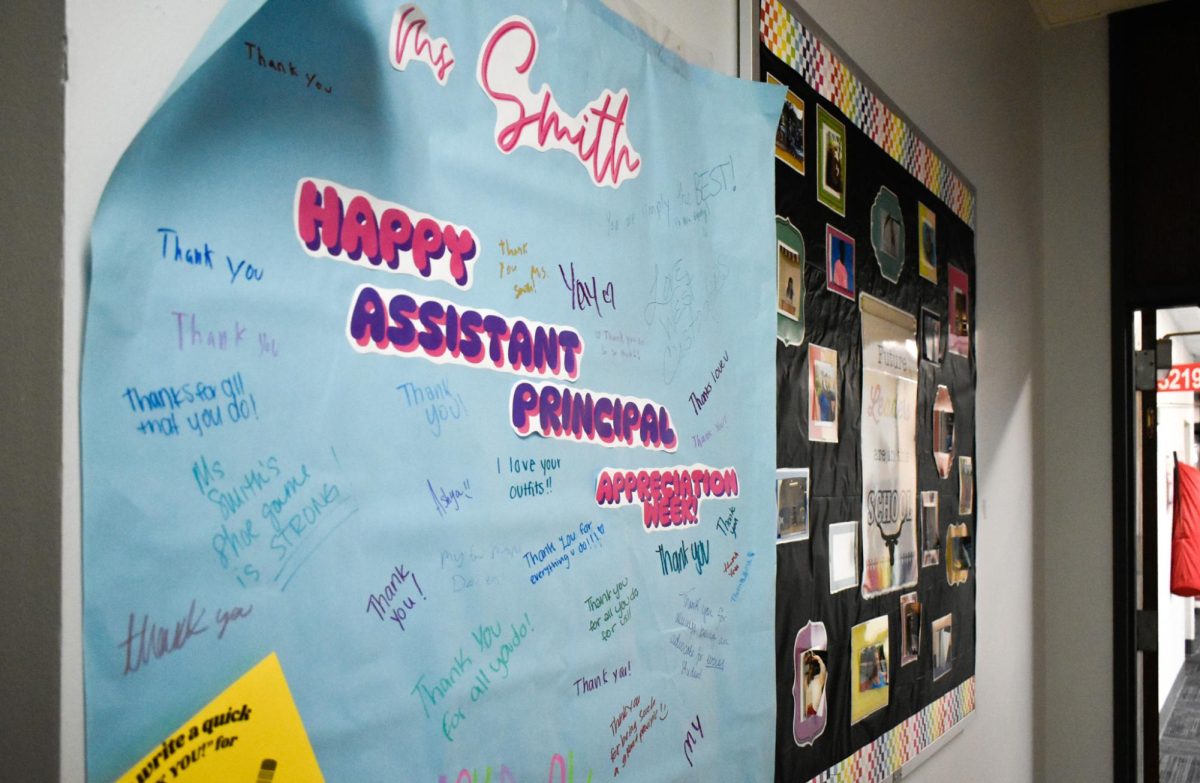
![Red, white and blue, the American flag holds the values of our democracy. The fight that we once endured has returned, as student journalists and senior correspondents across the country are losing their voices due to government control. “[Are] the White House and [the] government limiting free speech [and] freedom of the press? Yes [they are],” chief communications officer of the Parkway School District and former journalist Elisa Tomich said.](https://pwestpathfinder.com/wp-content/uploads/2025/03/Untitled-design-14.jpg)
![A board in the Parkway West counseling department displays pennants of selective universities. With a wide range of students interested in attending, it’s important that these schools have clear priorities when deciding who to admit. “[Washington University] had the major that I wanted, psychology, philosophy, neuroscience. That's a holistic study of the brain, and [WashU is] the only college in the world that offers that. That's the main reason I wanted to go; I got into that program,” senior Dima Layth said.](https://pwestpathfinder.com/wp-content/uploads/2025/02/Flag-1.png)
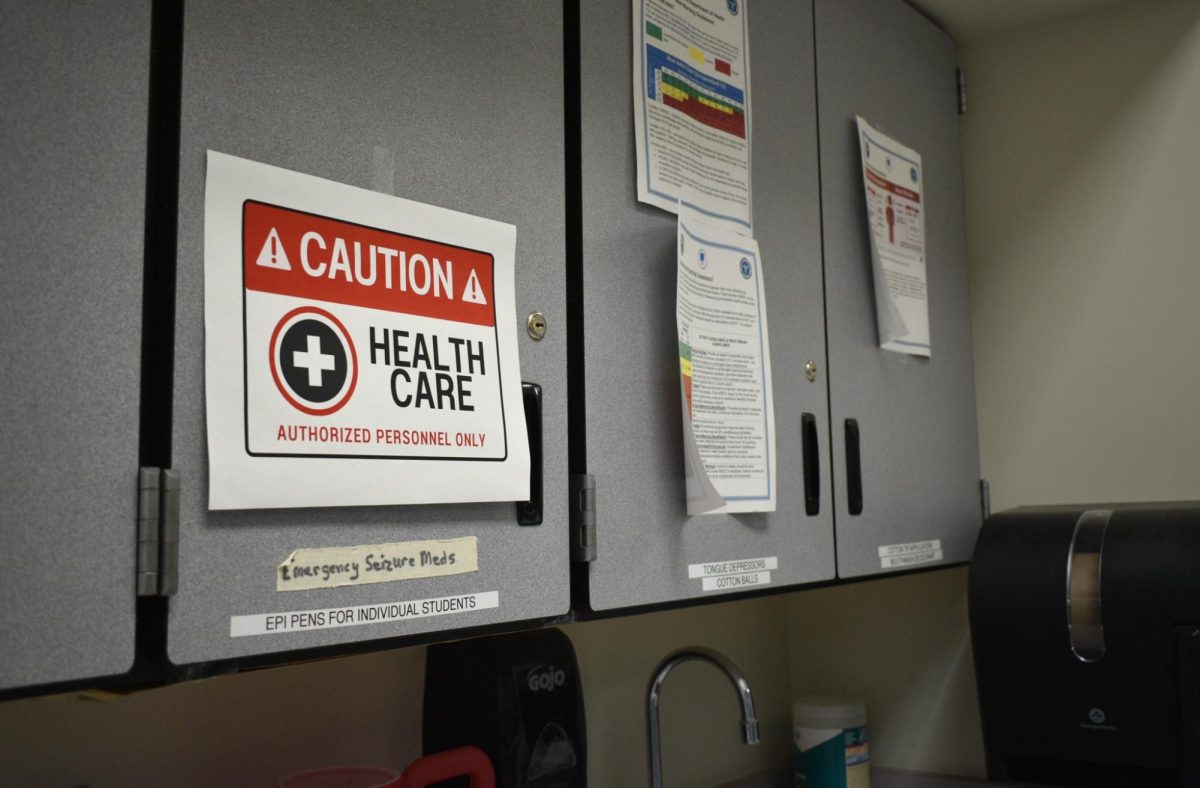
![Within the U.S., the busiest shopping period of the year is Cyber Week, the time from Thanksgiving through Black Friday and Cyber Monday. This year, shoppers spent $13.3 billion on Cyber Monday, which is a 7.3% year-over-year increase from 2023. “When I was younger, I would always be out with my mom getting Christmas gifts or just shopping in general. Now, as she has gotten older, I've noticed [that almost] every day, I'll open the front door and there's three packages that my mom has ordered. Part of that is she just doesn't always have the time to go to a store for 30 minutes to an hour, but the other part is when she gets bored, she has easy access to [shopping],” junior Grace Garetson said.](https://pwestpathfinder.com/wp-content/uploads/2024/12/DSC_0249.JPG-1200x801.jpg)
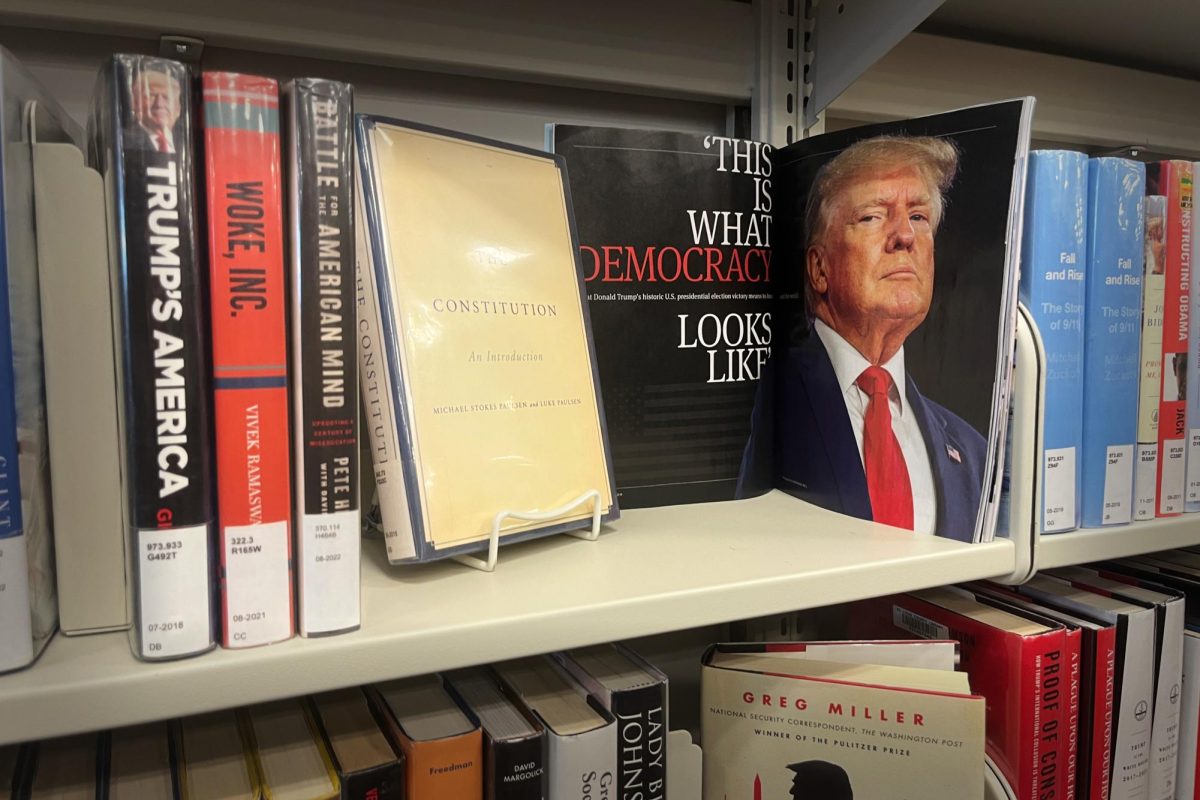
![Senior Sally Peters stands in the history hallway, contemplating her choices in the 2024 United States and Missouri elections on Nov. 5. As a member of Diplomacy Club, Peters has discussed key candidates and issues in contemporary American politics. “[As students], we're starting to become adults. We're realizing how much the policies that are enforced and the laws that make it through the House and Senate are starting to affect us. [Opportunities such as] AP [U.S.Government] and Diplomacy Club [make elections feel] a lot more real,” Diplomacy Club vice president and senior Nidhisha Pejathaya said.](https://pwestpathfinder.com/wp-content/uploads/2024/10/Flag-1-1.png)
![Mounting school pressure can leave many students overworked and overstressed. Schools must give students the necessary resources to help assuage student mental health issues and prevent the development of serious crises. “The biggest thing [schools] can do [to protect student mental health] is offer more time [to do work], like a study hall, or offer more support from teachers so that students don't feel stressed out and can get help in areas that they need,” senior Bhavya Gupta said.](https://pwestpathfinder.com/wp-content/uploads/2024/09/unnamed-4.jpg)
![After a thrilling point, senior Katie Byergo and junior Elle Lanferseick high-five each other on Oct. 8. With teamwork and camaraderie, Byergo worked together in the game against Lafayette High School. “[Byergo’s] is really positive with a good spirit,” Lanferseick said. “I set her [the ball] and she hits it [or] gets the kill.”](https://pwestpathfinder.com/wp-content/uploads/2025/10/DSC_9349-1-e1761159125735-1200x791.jpg)
![Focused on providing exceptional service, sophomore Darsh Mahapatra carefully cleans the door of a customer’s car. Mahapatra has always believed his customers deserve nothing less than the best. “[If] they’re trusting us with their car and our service, then I am convinced that they deserve our 100 percent effort and beyond,” Mahapatra said.](https://pwestpathfinder.com/wp-content/uploads/2025/10/DSC_0018-1200x800.jpg)
![Sophomore Aleix Pi de Cabanyes Navarro (left) finishes up a soccer game while junior Ava Muench (right) warms up for cross country practice. The two came to Parkway West High School as exchange students for the 2025-2026 school year. “The goal for the [exchange] program is to provide opportunities for both Parkway students and our international exchange students to learn about other cultures, build connections and become confident, capable, curious and caring — Parkway’s Four C’s — in the process,” Exchange Program Lead Lauren Farrelly said.](https://pwestpathfinder.com/wp-content/uploads/2025/10/Feature-Photo-1200x800.png)
![Gazing across the stage, sophomore Alexis Monteleone performs in the school theater. The Monteleone family’s band “Monte and the Machine” has been releasing music since 2012, but Alexis started her own solo career in 2024 with the release of her first single, Crying Skies. “My whole family is very musical, [and I especially] love writing [songs with them],” Monteleone said.](https://pwestpathfinder.com/wp-content/uploads/2025/09/DSC7463-1200x798.jpg)

![Leaping through the air, senior Tyler Watts celebrates his first goal of the season, which put the Longhorns up 1-0 against the Lafayette Lancers. Watts decided to play soccer for West for his last year of high school and secured a spot on the varsity roster. “[Playing soccer for West] is something I had always dreamed of, but hadn’t really had a good opportunity to do until now. It’s [really] fun being out [on the field], and I’m glad I decided to join the team. It’s just all about having fun with the boys and enjoying what time we have left together,” Watts said.](https://pwestpathfinder.com/wp-content/uploads/2025/09/DSC_1951-1200x855.jpg)
![Shifting global trade, President Donald Trump’s tariffs are raising concerns about economic stability for the U.S. and other countries alike. “[The tariffs are] going to pose a distinct challenge to the U.S. economy and a challenge to the global economy on the whole because it's going to greatly upset who trades with who and where resources and products are going to come from,” social studies teacher Melvin Trotier said.](https://pwestpathfinder.com/wp-content/uploads/2025/05/MDB_3456-1200x800.jpg)

![Pitching the ball on Apr. 14, senior Henry Wild and his team play against Belleville East. Wild was named scholar athlete of the year by St. Louis Post-Dispatch after maintaining a high cumulative GPA and staying involved with athletics for all of high school. “It’s an amazing honor. I feel very blessed to have the opportunity to represent my school [and] what [it] stands for,” Wild said.](https://pwestpathfinder.com/wp-content/uploads/2025/05/unnamed-6-1200x714.jpg)
![Freezing in their position, the Addams Family cast hits the “rigor mortis” pose after cast member and senior Jack Mullen, in character as Gomez Addams, calls out the stiff death move. For the past four months, the combined company of cast members, orchestra pit, crew and directors all worked to create the familial chemistry of the show. “I’m excited for [the audience] to see the numbers, the music, the scenes, but I also just love all the technical aspects of it. The whole spectacle, the costumes, makeup and the people that put in the work backstage in order to make the show successful on stage. I’m excited for people to see and appreciate that,” Mullen said.](https://pwestpathfinder.com/wp-content/uploads/2025/03/DSC0116-1200x800.jpg)
